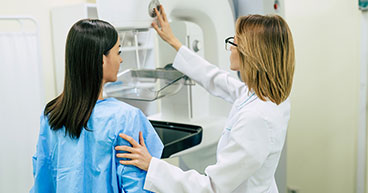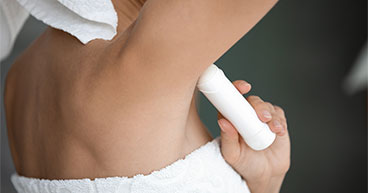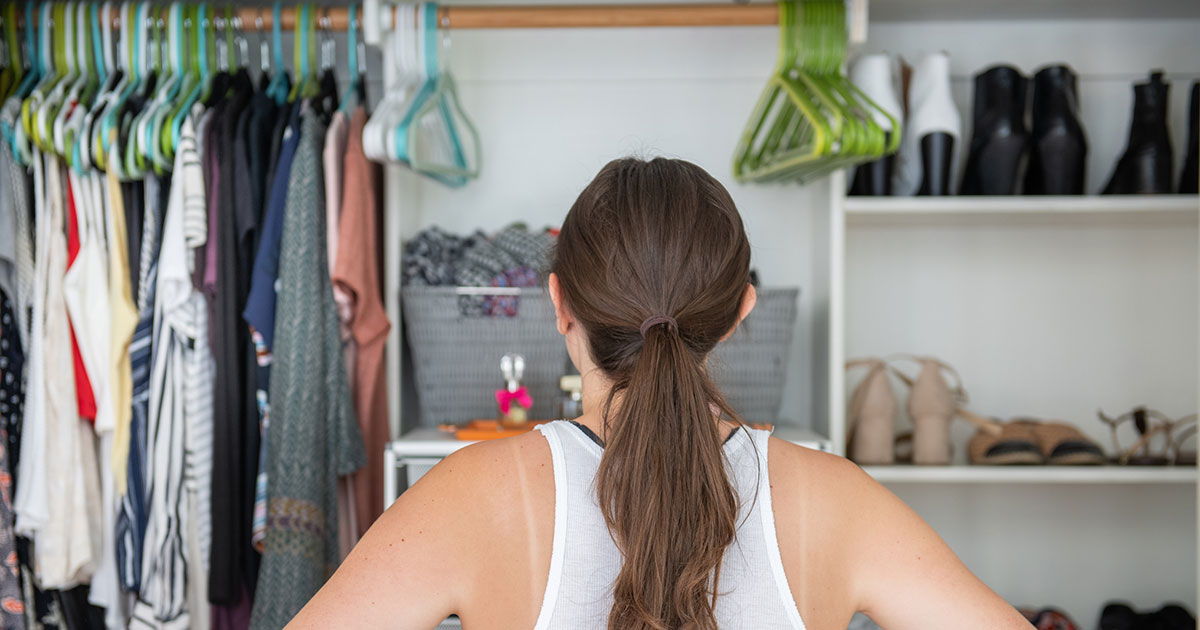
No matter how invasive or extensive your breast cancer surgery may be, it’s likely going to change your body in some way—at least temporarily, or maybe permanently. That may mean the clothes you wore before your surgery may not fit the same. As you recover, your clothing should be comfortable and fit properly.
Also, immediately after surgery, your clothing will need to accommodate surgical drains, sutures and the limited range of motion you’ll likely have. Finding clothing that reflects your personal sense of style after breast cancer surgery may also give your mental health and confidence a boost.
In this article, we’ll explain how to select clothing while also sharing fashion tips for various stages of recovery from breast cancer surgery and beyond. Topics include:
- What to wear immediately after breast cancer surgery
- Tips on selecting a bra
- Dressing after a mastectomy
- How to select a stylish swimsuit
- How to accessorize for your style
If you’ve been diagnosed with breast cancer and are interested in a second opinion about your cancer diagnosis and treatment plan, call us or chat online with a member of our team.
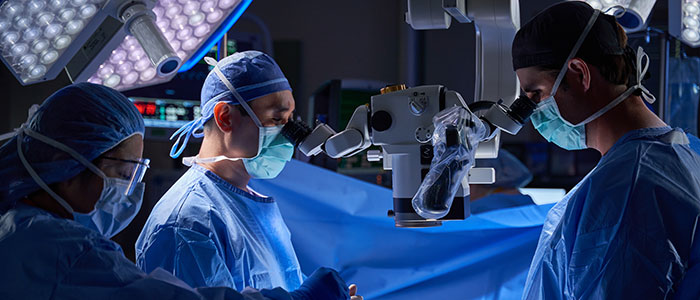
What to wear immediately after breast cancer surgery
When you return home after surgery, you will likely have sutures, medical dressings and/or surgical drains, so wearing large, loose-fitting tops that open in front may be good options for easy access and comfort.
“The surgical team will have a preference on what products the patient will wear for the first four weeks after surgery, and every post-operation plan is different,” says Sara Lorenzo, Garment Educator at City of Hope Chicago. “It’s wise to consult with your doctor about their preference and your needs as a patient to help you heal.”
A front-closure bra, which usually is fastened with a zipper, hooks or Velcro, is easy to take on and off without irritating the surgical site, Lorenzo says. Most mastectomy bras have built-in pockets to hold breast forms or protheses, which are used to correct imbalances due to tissue loss. Since healing is key, a breast form may not be recommended, but if the surgical team approves, a “fluff form” may be used. Fluff forms are virtually weightless and made from a material similar to pillow stuffing, Lorenzo says.
Since your range of motion may be limited, be sure your clothing can easily be taken on and off. For instance, in addition to tops that button or tie in front, opt for pants with an elastic waist that can be pulled up easily with one hand. Also, since you may not be able to comfortably bend over to tie your shoes, consider using footwear that you can easily slip into and out of. Fabrics should be soft and breathable since your skin may be sensitive, especially at the surgical site.
Special recovery robes, jackets and loungewear items often come with pockets sewn into the top to hold surgical drains. You can even find “brobes,” a bra-and-robe combination, with pockets for drains. Depending on your type of surgery, drains may have to remain in place for several weeks, so consider getting several tops to rotate between laundry loads. And since you may not have full range of motion for a specific period, blousy button-front shirts or wrap dresses, which don’t have zippers that may get caught, are a good, comfy option during this post-operative period.
These items may also serve you well if you’re undergoing breast cancer treatments like radiation therapy, which may cause skin sensitivity.
Tips on selecting a bra
Whether you’ve had a unilateral or bilateral mastectomy, lumpectomy or breast reconstruction surgery or you’ve decided to go flat, getting expert advice from a mastectomy bra fitter may enhance your comfort and self-image.
Lorenzo usually meets with new breast surgery patients after their initial four-week recovery period and when they’ve been cleared by their care team to explore options for a breast form and bra.
“I’m here to walk the patient through what they may see when they shop at home,” Lorenzo says. “But they absolutely don’t have to wear the products if they don’t want to.”
Lorenzo encourages patients to hold and feel the various breast forms that are designed to replace lost tissue and shows them how to use the bra pockets to house the forms.
“You want it housed, or otherwise, it’ll fall out,” she says, noting that some patients say they want to use the bras they wore before surgery, which Lorenzo says is fine “as long as they sew in that pocket.” If the bra has underwire, the medical team will usually encourage the patient to remove it so it doesn’t irritate the surgical site.
This is an opportunity to decide how you want to look with your new figure, and Lorenzo has found it’s common that women who had large breasts prior to surgery may want smaller breasts, while those who had small breasts often opt for larger breast forms. Lorenzo also discusses the weight of the breast form and how it may be configured for comfort or activity or to match an existing breast. Some also decide to have a flat chest with no breast prostheses.
Patients who may want to wear thin or sheer fabrics sometimes are concerned about making sure they have the appearance of nipples.
“One option is to put a silicone nipple on the breast prosthesis, so the prosthetic side matches the natural breast,” Lorenzo says. “I once had a patient who had bilateral mastectomies and wanted silicone nipples on both breast forms. She was in tears when she tried them on. She was overcome with emotion because she didn’t think she would ever have nipples again. She said she felt beautiful.”
Generally, mastectomy bras run about $45, with forms costing $200 to $300 each. Once a patient has been properly fit and is happy with the products, they can shop online for items that may be less expensive.
Whatever the situation, Lorenzo encourages patients to ask for help. Don’t be afraid to tell the person fitting you what you want to look like, she advises, adding that they’re experts who can help you find what you want. If you’re unhappy with your body image, tell someone on your care team.
For instance, Lorenzo works with a nurse and behavioral health therapists who help patients with body image issues, and “if they’re having concerns about sex, I would have them meet with the nurse or therapists. It’s nice that we’re all working together.”
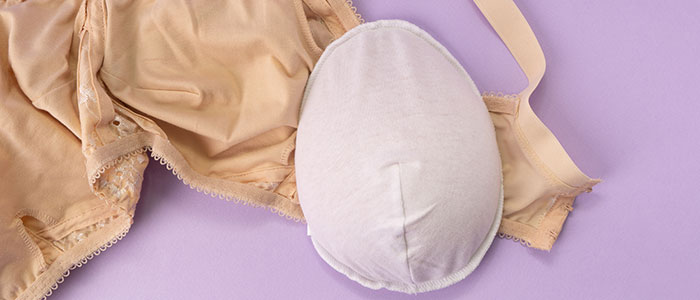
Dressing after a mastectomy
When thinking about what to wear after breast surgery, you’ll likely need to consider that the tissue removed may extend above the breasts and may leave a small, depressed area. You may choose to stop wearing low-cut tops or consider camisoles or mastectomy bras with lace or trim designed to hide that area.
Also, if you haven’t had reconstructive surgery, you won’t have cleavage, so you may need to reconsider wearing low-cut tops. Fashion experts recommend wearing loose-fitting tops with a higher neckline and a fabric that drapes, which can offer style without being too revealing.
Wearing a camisole may be another option, and a sports bra works for everyday style as well as when you’re participating in activities like jogging or playing tennis.
When shopping for fitted shirts, jackets and dresses, examine where the darts sit and where they may hit on your frame, to help ensure a good fit.
Lorenzo reminds patients that people will likely not notice changes to their figure. “We know our bodies more than everybody else does,” she says.
How to select a stylish swimsuit
Finding a swimsuit that’s flattering is a challenge for many women, but new considerations emerge after breast cancer surgery.
Writer, breast cancer survivor and advocate Anna Crollman, who offers tips, information and product recommendations on her website mycancerchic, says new swimsuit styles may flatter your new figure, especially if you’ve had reconstructive surgery.
Suits with ruffles or padding around the top may be a cute fit, she says. But steer clear of those with underwire since they may be uncomfortable.
How to accessorize for your style
Below are a few common-sense accessorizing tips to enhance your style after breast cancer surgery.
- In addition to wearing a camisole or sports bra under lower-cut shirts or blouses, consider outfits with knotted ties, frills or gathers at the neck to create a focal point and draw attention upward.
- A pretty, colorful scarf is great accessory to add flair and strategically cover areas of your neckline.
- Interesting earrings can attract the eye. Necklaces may not feel good at first, but as you progress through recovery, you may find that they once again become a favorite accessory.
- Don’t reject your favorite pre-surgery outfits before seeing whether you can accessorize them with a scarf or camisole or have them altered to work with your new shape.
- Consider drawing attention downward to your legs with stylish shoes or boots.
- Accessories like shoulder-strap purses or backpacks may be uncomfortable, especially at first, so consider using a fanny pack, wrist bag or clutch for your necessities.
Regardless of what you wear, one of your main considerations should be comfort. Be sure whatever you wear is made of soft, breathable fabric. Feeling at ease and comfortable in your clothes may give you the confidence to carry yourself—and your clothes—stylishly.
If you’ve been diagnosed with breast cancer and are interested in a second opinion about your cancer diagnosis and treatment plan, call us or chat online with a member of our team.

